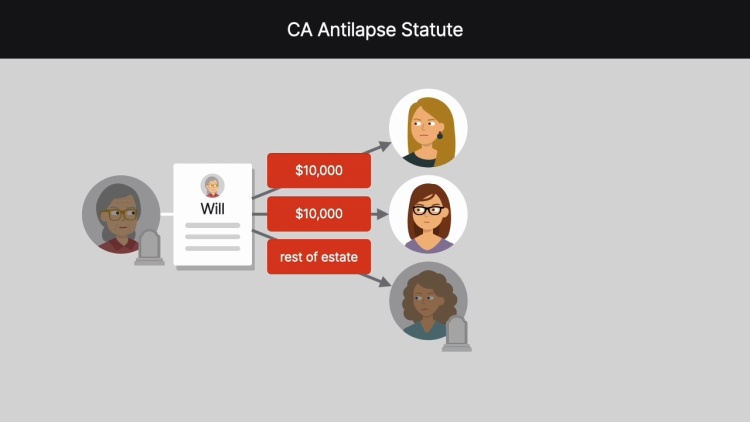Estate of Tolman v. Jennings
California Court of Appeal
181 Cal. App. 4th 1433, 104 Cal. Rptr. 3d 924 (2010)
- Written by Angela Patrick, JD
Facts
Nellie Tolman had two children. Tolman’s will left $10,000 each to her deceased son’s two daughters, Tolman’s granddaughters, Deborah Tomlinson (plaintiff) and Laurie Onan. The will stated that these gifts would lapse if either granddaughter died before Tolman. Tolman’s will left the rest of her estate, i.e., her residuary estate, to her daughter, Betty Joe Miller, with no mention of the gift lapsing if Miller died before Tolman. Tolman’s will also contained a provision stating that Tolman was intentionally omitting any living heirs who had not been mentioned in the will. At the time of Tolman’s death, Miller had already passed away. Under California’s antilapse statute, Miller’s gift would pass to Miller’s living lineal descendants: Miller’s son, Michael Jennings (defendant), and Miller’s three grandchildren. However, Tomlinson petitioned for a finding that the unnamed-heir paragraph in Tolman’s will prevented anyone other than Tomlinson, Onan, and Miller from inheriting. Because the antilapse statute would give Miller’s gift to unnamed heirs, Tomlinson argued that Tolman’s unnamed-heir provision had impliedly overridden the antilapse statute. Under Tomlinson’s interpretation of the will, Miller’s death meant that Miller’s gift had lapsed and, as the only remaining named heirs, Tomlinson and Onan should inherit Tolman’s entire $1 million estate. The trial court denied Tomlinson’s petition, finding that the antilapse statute applied and that Tolman’s residuary estate went to Miller’s lineal descendants.
Rule of Law
Issue
Holding and Reasoning (Lichtman, J.)
What to do next…
Here's why 899,000 law students have relied on our case briefs:
- Written by law professors and practitioners, not other law students. 47,000 briefs, keyed to 994 casebooks. Top-notch customer support.
- The right amount of information, includes the facts, issues, rule of law, holding and reasoning, and any concurrences and dissents.
- Access in your classes, works on your mobile and tablet. Massive library of related video lessons and high quality multiple-choice questions.
- Easy to use, uniform format for every case brief. Written in plain English, not in legalese. Our briefs summarize and simplify; they don’t just repeat the court’s language.





